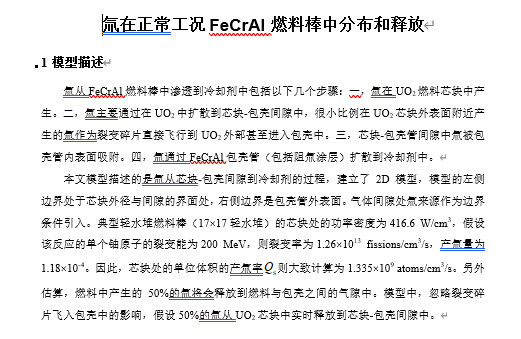
但增加Sieverts’ law,即规定了间隙浓度与包壳内表面氚浓度关系后,间隙中的氚浓度远低于FeCrAl包壳管内表面的氚浓度。这是由于在这种工况温度下氚在FeCrAl中的溶解度相对较高,在间隙中很微小的氚分压下,FeCrAl包壳管内表面倾向吸附氚。再增加Soret方程的模型计算得到的氚在FeCrAl内表面的浓度,大于无Soret方程的模型,这与氢在不锈钢材料中在Soret effect下由低温向高温处迁移的机理是匹配的。
However, after increasing Sieverts' law, that is, after specifying the relationship between the gap concentration and the tritium concentration on the inner surface of the envelope, the tritium concentration in the gap is much lower than the tritium concentration on the inner surface of the FeCrAl envelope tube. This is due to the relatively high solubility of tritium in FeCrAl at this operating temperature, and under the very small tritium partial pressure in the gap, the inner surface of the FeCrAl envelope tube tends to adsorb tritium. The concentration of tritium on the inner surface of FeCrAl calculated by adding the model of the Solet equation is greater than that of the model without the Foret equation, which matches the mechanism of hydrogen migration from low temperature to high temperature under the Soret effect in stainless steel.